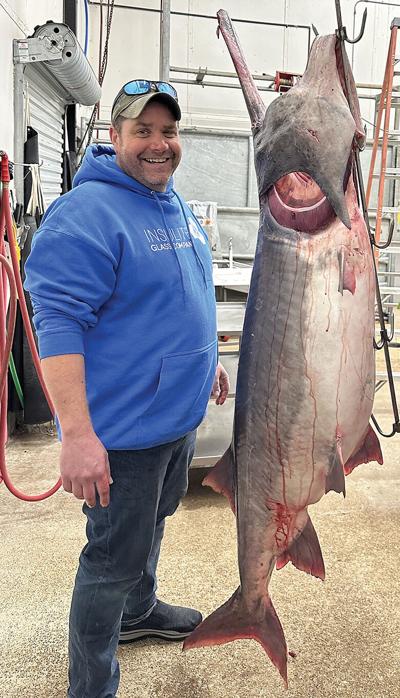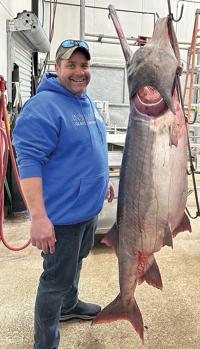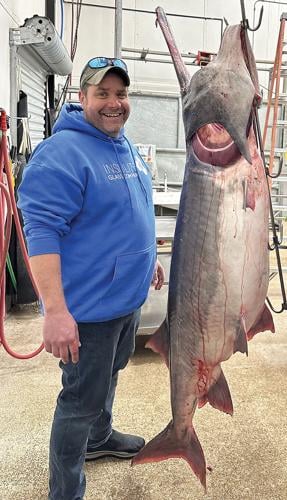A spoonbill on the trotline was always a great surprise when I was in the boat with my dad and Uncle Wink on the Missouri River near Hermann. We were trying to catch catfish and hoping for a big one. The cut bait we had on the long string of hooks was only supposed to attract Mr. Whiskers or an occasional gar or turtle.
Paddlefish, as spoonbills are officially known, feed on tiny aquatic insects and crustaceans. They will not take a baited hook, but because they collect their food by swimming with their big mouths open, they would occasionally, accidentally end up stuck on one of our hooks.
Sleek and shark-like, with that crazy spoon-shaped paddle at the front of its face, they were always a big kick to see. We also were astonished, when cleaning them, to discover they had no bones, just a strong spinal cord. After a lifetime of being warned about choking on fish bones, these fish seemed like manna from heaven.
How big these goofy-looking creatures could grow was another of the many things we didn’t realize about these prehistoric species. Their family dates back 150 million years based on fossil records, about the same time that flowering plants began appearing on earth, according to the state Department of Conservation.
Missouri has a fishing season for paddlefish, from March 15 through April 30. Anglers use heavy gear to drop big treble hooks and heavy weights into the water, sweeping the line along in an attempt to snag a full-sized fish. The minimum size limit is 32 or 34 inches depending on where you’re catching them, and that measurement does not include the length of the paddle.
On opening weekend this year, Chad Williams of Olathe, Kan., snagged a new world record paddlefish at Lake of the Ozarks. The giant weighed 164 pounds and 13 ounces. It bested the existing state record by nearly 25 pounds and topped the former world record of 164 pounds. In the photo, the fish looks nearly as big as the fisherman.
“I was thinking I was extremely weak because it was taking so long to reel in. My body was aching,” Williams said in a department press release. “I’d never been snagging before. Never seen a paddlefish – didn’t even know what it was!”
There are many interesting facts to learn about what we called spoonbills when I was a kid. Our North American fish is the last of its species. Its closest relative, the Chinese paddlefish, was declared extinct in 2022. Its demise was blamed on dams built on the rivers that prevented the fish from reaching their spawning grounds.
Dams and channelization on the Missouri and Mississippi rivers and their tributaries cause the same trouble, but artificial propagation in freshwater hatcheries in Missouri has helped stock rivers and large lakes to maintain the fishery.
Overharvesting also contributed to their decline in China, where as recently as the 1970s the annual catch was about 25 tons. In Missouri and many other places in North America, paddlefish are illegally poached for their eggs, which are served as caviar. Invasive zebra mussels also consume significant amounts of plankton that would otherwise feed native paddlefish.
In the limited places where natural spawning still occurs, eggs are deposited on silt-free gravel bars during the high water of spring. After the eggs hatch, the tiny fish are swept downstream to deeper pools, where they grow to adulthood. Paddlefish can grow up to 14 inches their first year. At age 17 they can be five feet long, and they may live 30 years or more.
Most paddlefish snagging in Missouri takes place at Lake of the Ozarks, Truman Reservoir and Table Rock Lake, but they can also be found in the state’s big rivers. In Jefferson County, anglers on the Meramec River near Winter Park try their luck.
That distinctive paddle up front is called a rostrum, and the fish uses it as an electrosensory organ to identify the presence of plankton as it swims along. Fortunately it didn’t always help them miss our trotline hooks.





